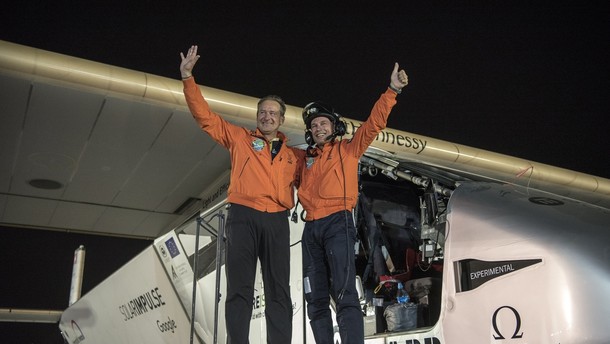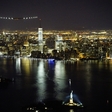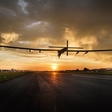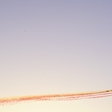
By landing back in Abu Dhabi after a total of 23 days of flight and 43'041 km travelled in a 17 leg journey, Si2 has proven that clean technologies can achieve the impossible. Beyond this historic milestone, the two Swiss pioneers will continue to urge the global implementation of energy efficient solutions through the creation of the International Committee for Clean Technologies and leverage the expertise and technology gained over the years in Solar Impulse by launching new innovative projects, such as the development of solar powered drones.
Coming from Egypt, Bertrand Piccard landed in Abu Dhabi this morning at 4:05 am local time (UTC+4) completing the final leg of an endeavor that was until now considered impossible: flying around the globe in an electric airplane powered only by the sun and capable of flying many days and nights in a row without fuel. This landing brings full circle the historic circumnavigation that began on 9 March 2015 when Si2 set off from Abu Dhabi with André Borschberg at the controls. Taking turns in the single-seater 3.8m3 cockpit, Bertrand Piccard and André Borschberg have flown Si2 around the world in 17 legs, crossing Asia, the Pacific Ocean, the USA, the Atlantic Ocean, the Mediterranean Sea and the Middle East. A total of 19 world records were set or are still pending by the World Air Sports Federation (FAI), in particular when André Borschberg accomplished the pioneering first of flying five consecutive days and nights over the Pacific Ocean from Japan to Hawaii in the longest duration a solo airplane of any kind has ever flown and when Bertrand Piccard achieved the historic first crossing of the Atlantic Ocean in a solar airplane.
For the two Swiss pioneers, it's the accomplishment of a dream that was considered impossible by many experts and the demonstration that renewable energies and efficient technologies offer tangible solutions for sustainability. Bertrand Piccard, an explorer and medical doctor at heart, had the vision of an airplane of perpetual endurance after his non-stop round the world balloon flight in 1999, when he made the promise to circumnavigate the Earth again, but this time without any fuel. In 2004, he began bringing together the partners who provided funds and technology for this adventure and partnered with André Borschberg. An entrepreneur and skilled aviator, Borschberg took on the technical challenge of developing the solar airplane and making it fly. More than taking turns at the controls of Si2 in the air, the first ever Round-The-World Solar Flight is also a tandem achievement on the ground: while Piccard developed the project outreach to promote clean technologies, Borschberg pulled together the team that designed and constructed Si2 as well as organized the flight missions.
"This is not only a first in the history of aviation; it's before all a first in the history of energy. I'm sure that within 10 years we'll see electric airplanes transporting 50 passengers on short to medium haul flights. But it's not enough. The same clean technologies used on Solar Impulse could be implemented on the ground in our daily life to divide by two the CO2 emissions in a profitable way. Solar Impulse is only the beginning, now take it further! " said Initiator, Chairman and Pilot Bertrand Piccard addressing the crowd while exiting the cockpit of Si2.
"Flying one leg with a completely new type of airplane is difficult enough, but flying around the world is a real challenge. More than a demonstration, it's the confirmation that these technologies are truly dependable and reliable," emphasized CEO, Co-Founder and also Pilot André Borschberg. "There is so much potential for the aeronautical world: while one hundred percent solar powered airplanes might take longer to materialize, electric airplanes will develop in the near future because of their tremendous advantages such as energy efficiency."

A few hours before touching down in Abu Dhabi, Bertrand Piccard spoke to UN Secretary-General Ban Ki-moon live from the Si2 cockpit: "Solar Impulse has flown more than 40,000 kilometers without fuel, but with an inexhaustible supply of energy and inspiration. This is a historic day for Captain Piccard and the Solar Impulse team, but it is also a historic day for humanity," said the UN Secretary-General. "You may be ending your around the world flight today, but the journey to a more sustainable world is just beginning. The Solar Impulse team is helping to pilot us to that future."
Looking forward, Bertrand Piccard and André Borschberg will continue to actively promote the use of modern clean technologies as a way to improve the quality of life on Earth. Firstly, through the already announced creation of the International Committee for Clean Technologies that will build on the #futureisclean initiative and regroup the main global actors in the field of clean technologies to bring independent and credible guidance on energy policy to governments and corporations alike. Secondly, by carrying on the work initiated by the engineering team on unmanned and high endurance electric aircrafts, which could fly in high altitude for months, offering services that could provide exponential added value and complement the work being done by satellites today in a flexible and sustainable way.
"We have flown 40'000 kilometers (around the world) without fuel, but there is still a lot to be done to encourage a worldwide implementation of clean technologies and to motivate everyone to reduce their dependence on fossil fuels in their daily lives, hence the creation of the International Committee for Clean Technologies," emphasized Bertrand Piccard.
"Solar Impulse is of course very well positioned to contribute to the next generations of manned or unmanned electric aircrafts. By capitalizing on the engineering skills and expertise gained over the past decade, we will continue to work to encourage concrete innovations and disruptive solutions," concluded André Borschberg.
Flight report: Leg 17 – Cairo International Airport, (Egypt) to Al Bateen Executive Airport, (Abu Dhabi)
Pilot: Bertrand Piccard, Initiator, Chairman, and pilot of Solar Impulse
Take-off: 1:28 am local time Cairo, Egypt on 24 July 2016 (23:28 UTC on 23 July 2016)
Landing: 4:05 am local time Abu Dhabi, United Arab Emirates on 26 July 2016 (2:05 UTC on 26 July 2016)
Flight time: 48 hours and 37 minutes
Maximum altitude: 28'000 feet (8'534 m)
Average speed: 34.5 mph (55.40 km/h)
Flight distance covered: 2'694 km (1'674 miles)



